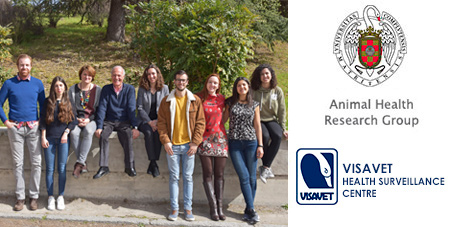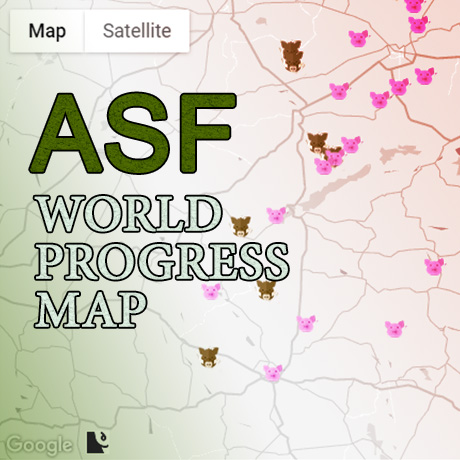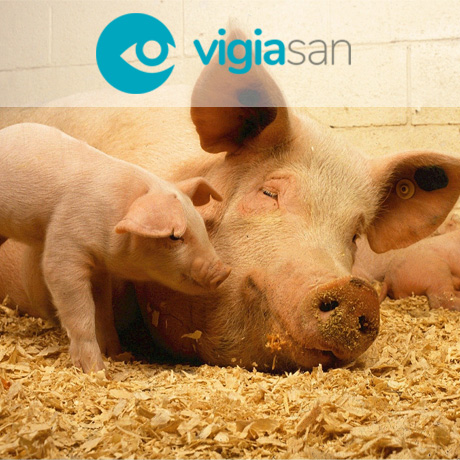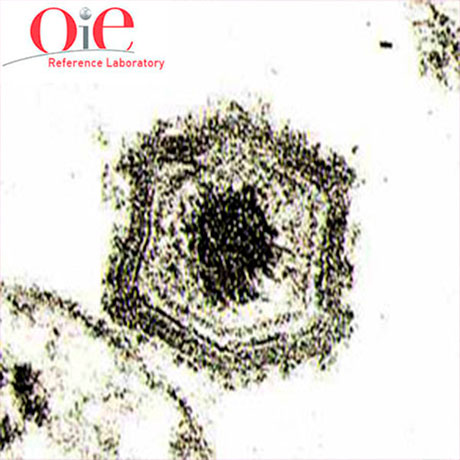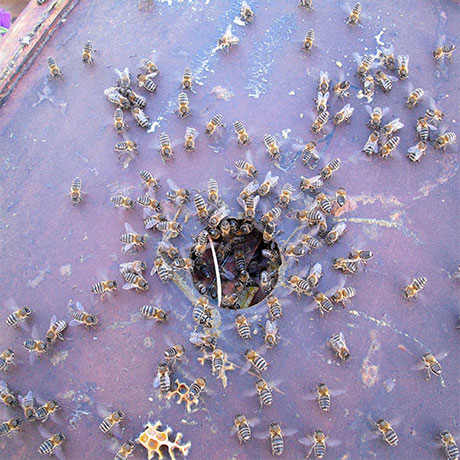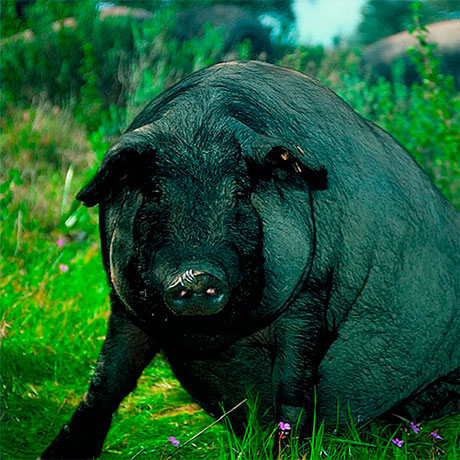Low transmission risk of African swine fever virus between wild boar infected by an attenuated isolate and susceptible domestic pigs
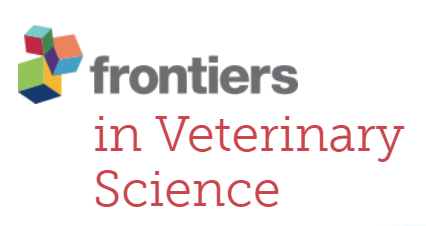
Last research article published in Frontiers in Veterinary Science.
Abstract: African swine fever (ASF) is a lethal infectious disease that affects domestic and wild pigs. This complex virus has already affected five continents and more than 70 countries and is considered to be the main threat to the global swine industry. The disease can potentially be transmitted directly through contact with infectious animals, or indirectly by means of contaminated feed or environments. Nevertheless, the knowledge regarding the transmission patterns of different ASF virus isolates at the wildlife-livestock interface is still limited. We have, therefore, assessed the potential transmission of an attenuated ASF virus isolate between infectious wild boar and directly exposed domestic pig. We registered 3,369 interspecific interactions between animals, which were brief and mostly initiated by wild boar. The major patterns observed during the study were head-to-head contact owing to sniffing, thus suggesting a high probability of pathogen transmission. However, only one of the five domestic pigs had a short period of viremia and became serologically positive for ASF virus antibodies. It was additionally discovered that the wild boar did not transmit the virulent virus isolate to the domestic pigs, which suggests that the presence of attenuated ASF virus isolates in affected areas may control the spreading of other more virulent isolates. These outcomes may help make decisions related to large-scale targeted management actions against ASF in field conditions.
Kosowska A, Barasona JA, Barroso-Arévalo S, Blondeau Leon L, Cadenas-Fernández E, Sánchez-Vizcaíno JM.
Epidemiological and genetic analysis of Cetacean Morbillivirus circulating on the Italian coast between 2018 and 2021
 New research article in Frontiers in Veterinary Science journal.
New research article in Frontiers in Veterinary Science journal.
Abstract: Cetacean morbillivirus (CeMV) has caused several outbreaks, unusual mortality events, and interepidemic single-lethal disease episodes in the Mediterranean Sea. Since 2012, a new strain with a northeast (NE) Atlantic origin has been circulating among Mediterranean cetaceans, causing numerous deaths. The objective of this study was to determine the prevalence of CeMV in cetaceans stranded in Italy between 2018 and 2021 and characterize the strain of CeMV circulating. Out of the 354 stranded cetaceans along the Italian coastlines, 113 were CeMV-positive. This prevalence (31.9%) is one of the highest reported without an associated outbreak. All marine sectors along the Italian coastlines, except for the northern Adriatic coast, reported a positive molecular diagnosis of CeMV. In one-third of the CeMV-positive cetaceans submitted to a histological evaluation, a chronic form of the infection (detectable viral antigen, the absence of associated lesions, and concomitant coinfections) was suspected. Tissues from 24 animals were used to characterize the strain, obtaining 57 sequences from phosphoprotein, nucleocapsid, and fusion protein genes, which were submitted to GenBank. Our sequences showed the highest identity with NE-Atlantic strain sequences, and in the phylogenetic study, they clustered together with them. Regarding age and species, most of these individuals were adults (17/24, 70.83%) and striped dolphins (19/24, 79.16%). This study improves our understanding on the NE-Atlantic CeMV strain in the Italian waters, supporting the hypothesis of an endemic circulation of the virus in this area; however, additional studies are necessary to deeply comprehend the epidemiology of this strain in the Mediterranean Sea.
Vargas-Castro I, Peletto S, Mattioda V, Goria M, Serracca L, Varello K, Sánchez-Vizcaíno JM, Puleio R, Nocera FD, Lucifora G, Acutis P, Casalone C, Grattarola C, Giorda F.
Eco-Sanitary Regionalization of Wild Boar (Sus scrofa) in the Western Palearctic Realm as a Tool for the Stewardship of African Swine Fever
 We publish a new research article in the journal Transboundary and Emerging Diseases.
We publish a new research article in the journal Transboundary and Emerging Diseases.
Abstract: African swine fever (ASF) is a viral hemorrhagic disease affecting domestic and wild suids, with catastrophic socioeconomic impact worldwide. In the European scenario, wild boar (Sus scrofa) actively contributes to the maintenance and spread of the disease. In this study, we applied a multivariate clustering method to define ecoregions in the western Palearctic realm based on ecological and sanitary aspects of ASF in wild boar. Beforehand, we performed a principal components analysis for the eight selected variables. An analysis of the countries was carried out in terms of the extent of ecoregions and ASF notifications. After clustering, we identified nine eco-regions that showed important differences based on the used eco-sanitary variables. Several ecoregions stand out in the country and notification analysis for retaining the most ASF cases and being present in their surrounding locations. Here, we developed a cartographical tool to understand patterns in the distribution and spread of ASF in wild boar at the European level, as well as improve prevention, control, surveillance plans, and eradication strategies, especially future vaccination programs once a safe and effective vaccine is available.
Aguilar-Vega C, Muñoz-Pérez C, Sanchez-Vizcaino JM, Martínez-Aviles M & Bosch J.
Fear in Spanish farms that African swine fever will arrive
Qualitative risk assessment of Bluetongue virus entry into the Canary Islands
We have submitted a new research article at the journal Animals.
 Abstract: Bluetongue is a viral ruminant disease transmitted by Culicoides spp. biting midges. In the last decades, it increased its expansion and became endemic in areas where it used to be sporadic ie south of Spain, France or Morocco. However, in spite of its widely dissemination, the virus has not ever been reported in the Canary Islands. The disease could cause severe consequences, that is why the interest of assessing the risk of entry of Bluetongue virus into the Canary Islands. An entry qualitative evaluation was performed following the World Organization of Animal Health guidelines. Firstly, risk pathways were identified from literature review; the risk factors related to the level of risk by pathway were selected and combined to get a risk score for every movement, finally, the risk score per movement were analysed to get the temporal and spatial risk of entry. The windborne route was assessed through the trajectory and deposition Hybrid Single Particle Lagrangian Integrated Trajectory Model. The results indicated that the more relevant vía is infected cattle although the risk is very low; and that BTV8 risk slightly outstand BTV 1 and 4. In addition, the risk is principally concentrated in some areas at the North and East of Gran Canaria and Tenerife Island. Other potential routes of entry were vector coming with ungulates or on wind streams however those resulted to be unlikely routes. This work could be useful to focus surveillance measures for cost-effective early detection and prevention programmes.
Abstract: Bluetongue is a viral ruminant disease transmitted by Culicoides spp. biting midges. In the last decades, it increased its expansion and became endemic in areas where it used to be sporadic ie south of Spain, France or Morocco. However, in spite of its widely dissemination, the virus has not ever been reported in the Canary Islands. The disease could cause severe consequences, that is why the interest of assessing the risk of entry of Bluetongue virus into the Canary Islands. An entry qualitative evaluation was performed following the World Organization of Animal Health guidelines. Firstly, risk pathways were identified from literature review; the risk factors related to the level of risk by pathway were selected and combined to get a risk score for every movement, finally, the risk score per movement were analysed to get the temporal and spatial risk of entry. The windborne route was assessed through the trajectory and deposition Hybrid Single Particle Lagrangian Integrated Trajectory Model. The results indicated that the more relevant vía is infected cattle although the risk is very low; and that BTV8 risk slightly outstand BTV 1 and 4. In addition, the risk is principally concentrated in some areas at the North and East of Gran Canaria and Tenerife Island. Other potential routes of entry were vector coming with ungulates or on wind streams however those resulted to be unlikely routes. This work could be useful to focus surveillance measures for cost-effective early detection and prevention programmes.
Gutierrez I, Sanchez-Vizcaino JM, Aguilar-Vega C y Sanchez-Vizcaino F.
A useful tool for the safe diagnosis and control of the two main pandemics of the XXI century: COVID-19 and African Swine Fever disease

Open access article published in Plos One Journal.
Abstract:
The COVID-19 pandemic and the disease triggered by the African Swine Fever virus are currently two of the main problems regarding public and animal health, respectively. Although vaccination seems to be the ideal tool for controlling these diseases, it has several limitations. Therefore, early detection of the pathogen is critical in order to apply preventive and control measures. Real-time PCR is the main technique used for the detection of both viruses, which requires previous processing of the infectious material. If the potentially infected sample is inactivated at the time of sampling, the diagnosis will be accelerated, impacting positively on the diagnosis and control of the disease. Here, we evaluated the inactivation and preservation properties of a new surfactant liquid for non-invasive and environmental sampling of both viruses. Our results demonstrated that the surfactant liquid effectively inactivates SARS-CoV-2 and African Swine Fever virus in only five minutes, and allows for the preservation of the genetic material for long periods even at high temperatures such as 37°C. Hence, this methodology is a safe and useful tool for recovering SARS-CoV-2 and African Swine Fever virus RNA/DNA from different surfaces and skins, which has significant applied relevance in the surveillance of both diseases.
Barroso-Arevalo S, Diaz-Frutos M, Kosowska A, Perez-Sancho M, Domínguez L & Sanchez-Vizcaino JM.



